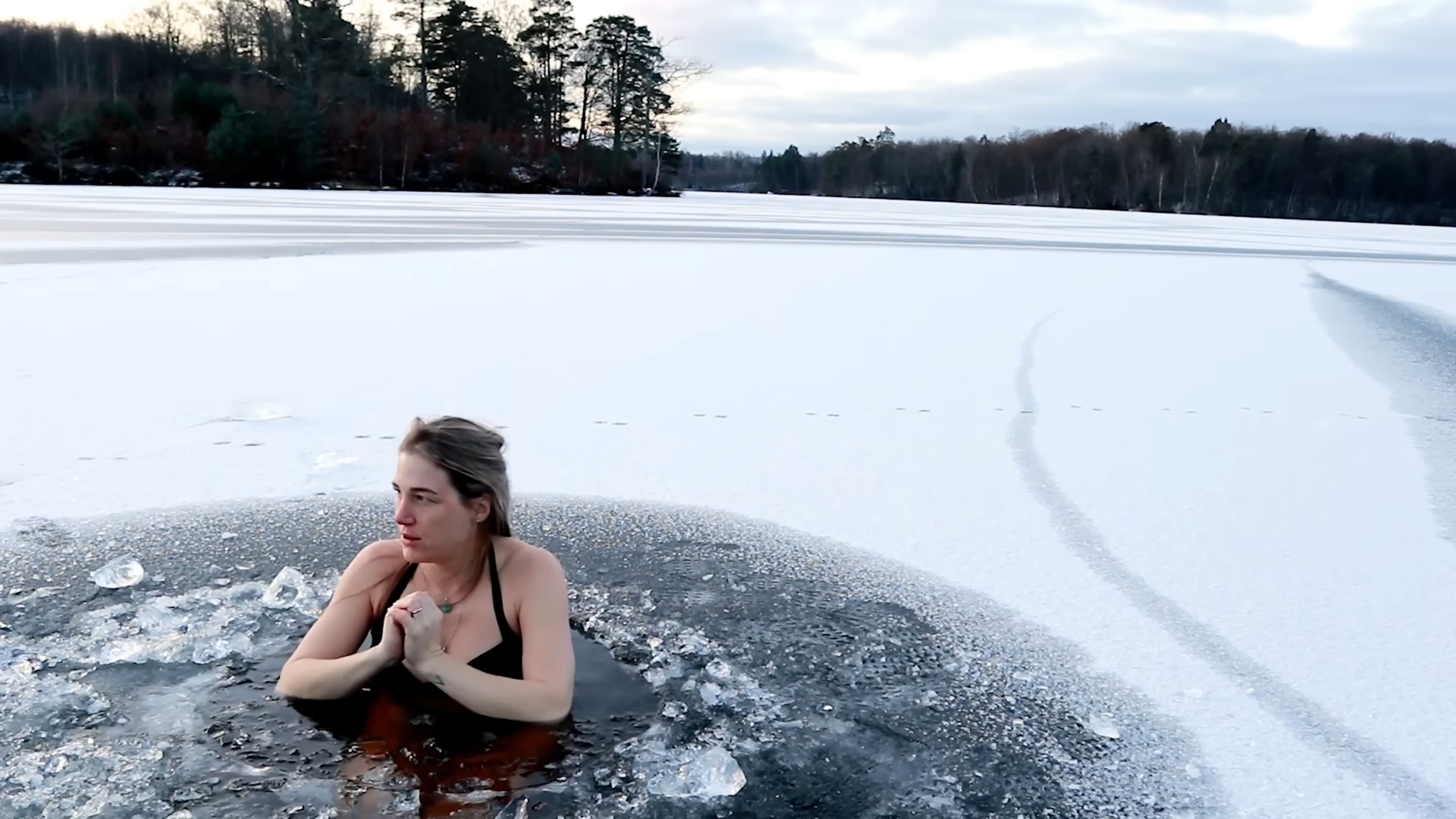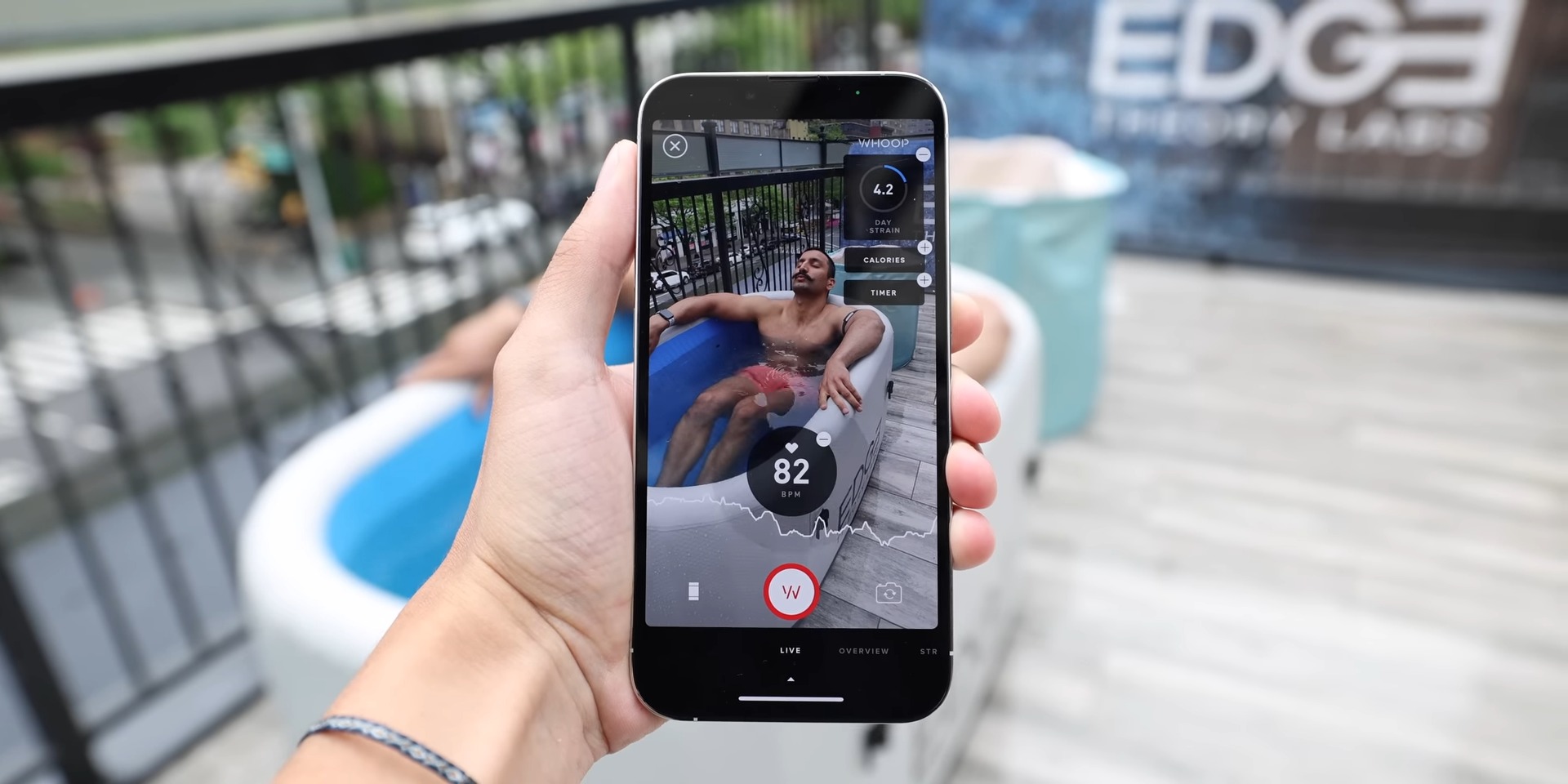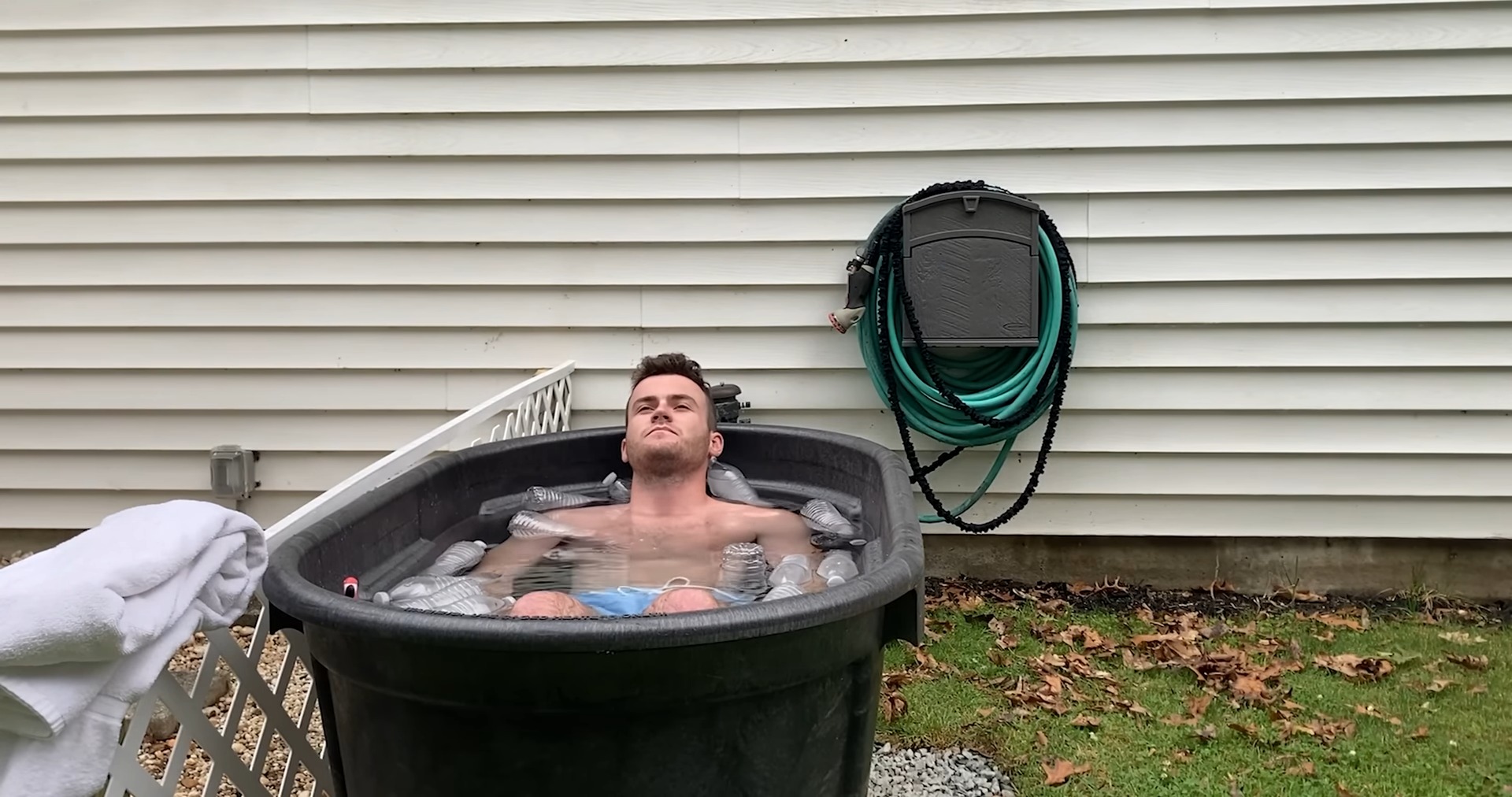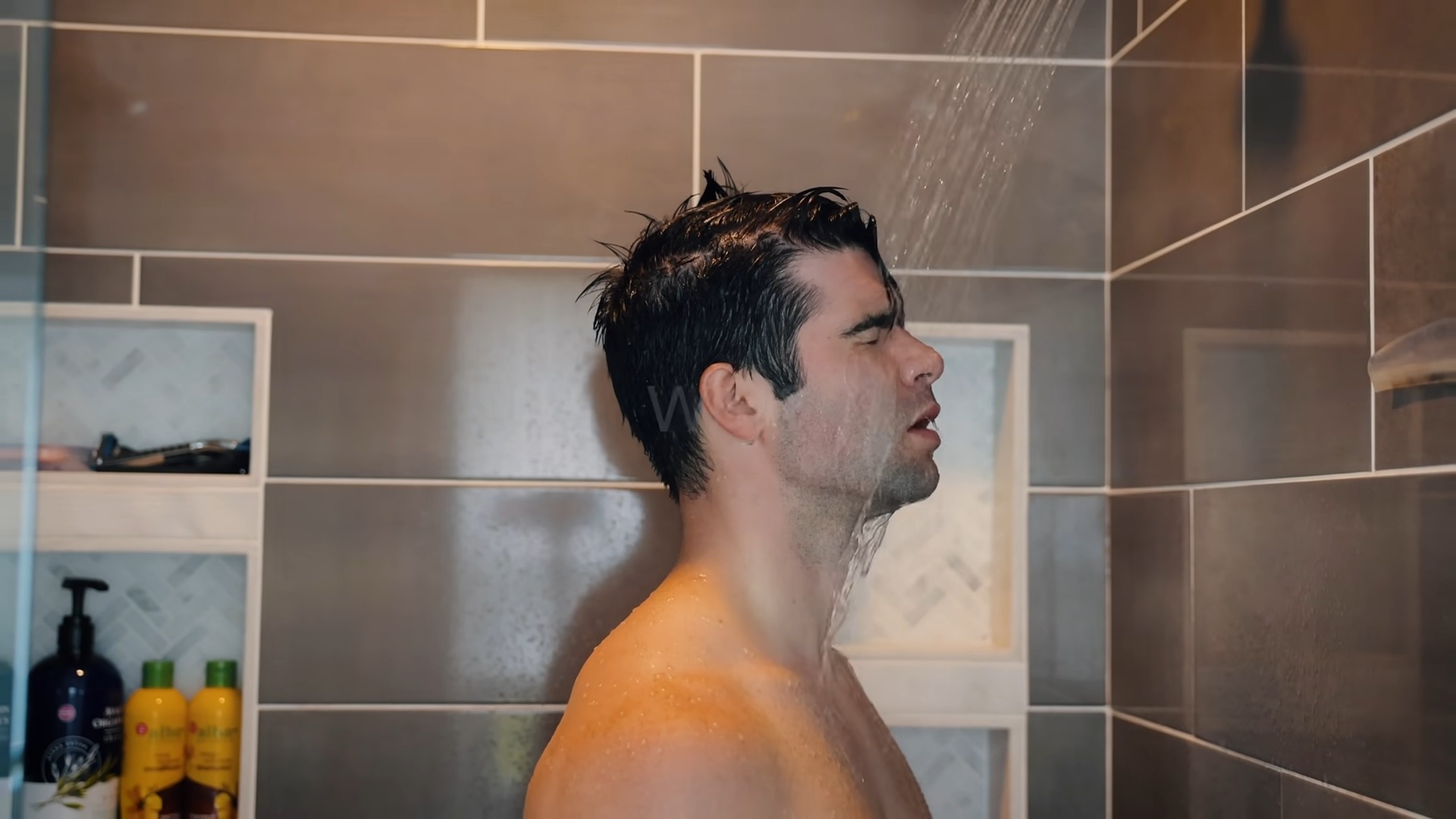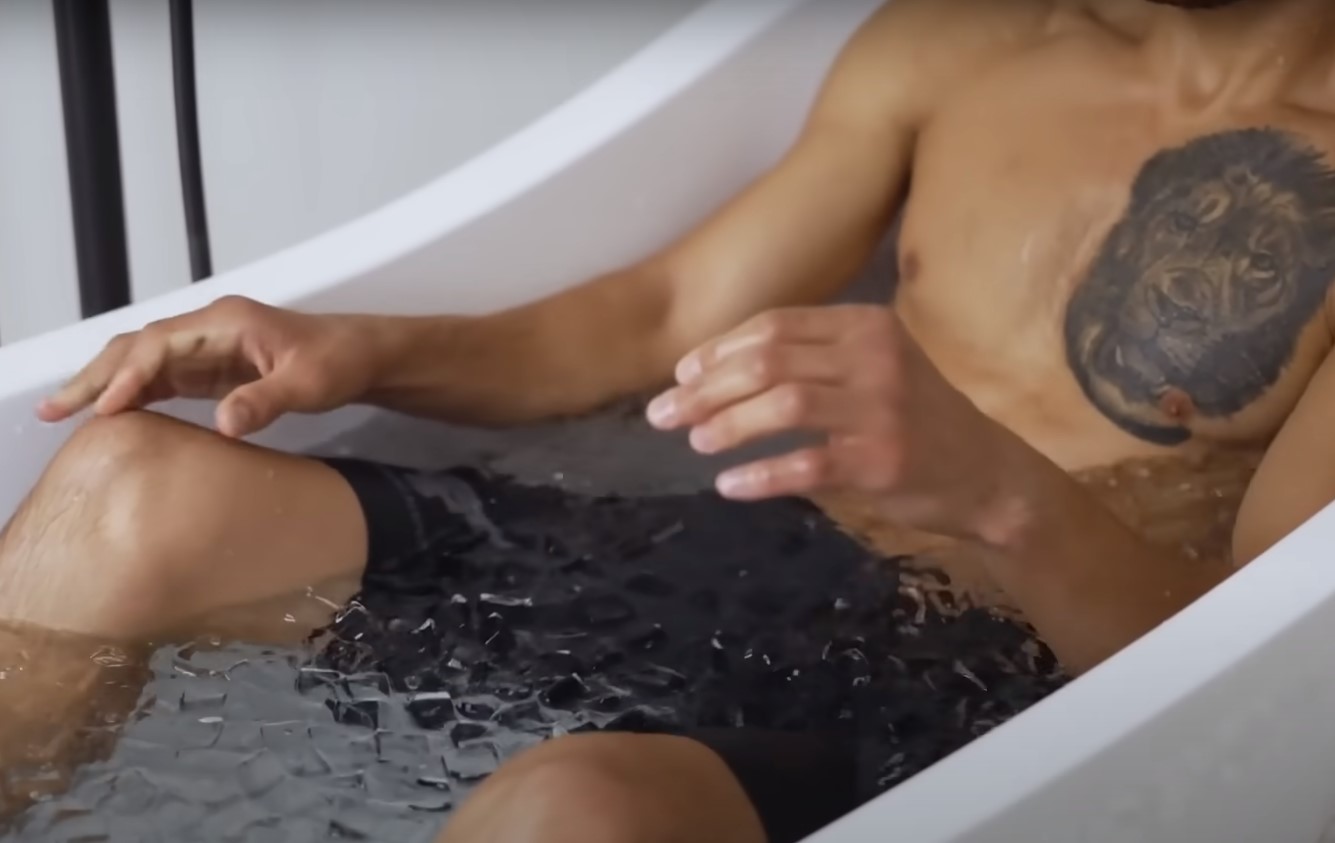If you’ve ever watched elite athletes or fitness enthusiasts, you might have noticed their post-workout ritual of plunging into a tub filled with ice. Have you ever wondered why they endure such a chilling experience? Ice baths, or cold-water immersion, have gained popularity for their potential benefits, including reduced muscle soreness and improved sleep.
In this guide, we will get into the world of ice baths, exploring their benefits, optimal temperatures, and how long and how cold should your ice bath be to safely perform at home. Get ready to embrace the cold and unlock the secrets of this rejuvenating practice.
Key Takeaways
- Ice baths can provide numerous benefits, including reduced muscle soreness and improved sleep.
- Optimal temperature varies from individual to individual and the duration should be tailored accordingly.
- Safety considerations must be taken into account when practicing cold water therapy for maximum benefit.
Overview Ice Baths
As someone who has dabbled in sports and fitness, I’ve come to appreciate the magic that is ice baths, or as it’s formally known, cold water immersion. This technique is a favorite among athletes and fitness gurus alike, and for good reason! The benefits are astounding – imagine reduced muscle soreness, improved sleep, and a boost in mental toughness, all from taking a dip in some chilly water.
I remember the first time I tried it; I was skeptical, but the relief I felt in my sore and aching muscles afterward was undeniable. It’s not just about cooling down; the cold water works to alleviate muscle soreness by lowering your core body temperature and causing your blood vessels to constrict.
Now, it’s a regular part of my recovery routine, and I can’t recommend it enough.
Cold water therapy can be administered in various ways, such as:
- sitting in a bathtub filled with cold water and ice
- wading into a chilly lake
- Take a cool shower
- alternating cold water immersion with hot water immersion
Regardless of the method, the goal is to submerge your entire body in the icy water, allowing the cold to contact your thyroid and the back of your neck, thus facilitating the regulation of body temperature and eliciting an optimal hormonal response and immune system.
The potential benefits of cold water exposure include improved circulation, reduced inflammation, and a positive effect on mood. Engaging in ice baths can potentially improve athletic performance by more blood flow and facilitating quicker recovery following physical exercise.
Breathwork techniques, such as extended exhalations and full in-breaths followed by a brief pause, can be utilized to increase comfort during an ice bath.
Optimal Temperature
The optimal temperature for ice baths varies depending on individual preferences and experience, with beginners starting at around 60°F and regular ice bathers preferring temperatures between 40-50°F. Listening to your body and making necessary adjustments is critical, and your approach should be independent of others. What works best for you should be the primary focus.
We suggest experimenting with different times and temperatures to gain insight into the benefits of cold therapy and create a unique routine tailored to your individual needs. Subsequent feelings during and after each experience should be taken into account, allowing you to adjust your practice accordingly.
Gradually adding ice to the bathtub or container filled with cold water is a reliable method to reach the desired temperature. Monitoring the water temperature with a thermometer can help you achieve the ideal temperature for your ice bath.
Always prioritize your comfort and make necessary adjustments to the temperature.
Determining the Right Duration
The ideal duration for an ice bath is between 10-15 minutes. However, beginners should start with shorter sessions of around 5 minutes and gradually increase their time in the cold water. Assessing your body’s response to warm water therapy and modifying your practice as needed is critical. Exit the water once you start to shiver or shake.
At PLUNGE, a company specializing in cold water immersion therapy, they suggest 2-10 minutes. The key is to find the right temperature and balance for your body and ensure that you’re reaping the benefits of the ice bath without causing unnecessary discomfort or harm.
Remember how much ice is, the goal is not to endure extreme cold for an extended period. Instead, focus on your body’s response and make adjustments as needed. Consistent and regular practice at a comfortable duration will yield the best results.
Preparing for Your Ice Bath
Mental and physical preparation is essential before immersing oneself in the world of ice baths. One of the first steps in getting ready for an ice bath is acclimatizing to cold showers. Regular cold showers can help build your cold tolerance and make the transition to ice baths smoother.
In addition to getting used to cold showers, practicing deep breathing techniques can help you stay calm and focused during your first ice bath ever. Breathwork can increase heart rate, circulation, and overall comfort while submerged in cold water.
Finally, make sure you have warm clothing prepared for after the ice bath. Dry off quickly and bundle up to restore your body core temperature, and prevent unnecessary exposure to cold air.
Setting Up Home
Setting up an ice bath at home requires a large tub or container, ice, and a thermometer to monitor the water temperature. To begin your ice bath routine, fill the tub to the desired level with cold water, then gradually add ice until the temperature is comfortable.
Professionals commonly recommend a water-to-ice ratio of 3:1. This combination helps maintain optimal hydration and temperature levels while ensuring satisfactory results.
Incrementally increasing the ice levels is crucial. This will help your body adjust and build up its tolerance to extreme temperatures. If the temperature is too high, add more ice; if it’s too low, gradually add warmer water to adjust the temperature to your comfort level.
Companies like The Cold Plunge specialize in producing tubs designed for a practice called cold water immersion therapy, offering resources such as a blog, guided plunge videos, and a review of potential benefits.
Investing in a specialized tub can enhance your ice bath experience and ensure optimal results.
Safety Considerations and Precautions
Safety precautions for ice baths include:
- Limiting sessions to 15 minutes or less
- Monitoring for signs of hypothermia or frostbite
- Consulting a healthcare provider if you have certain medical conditions
Conditions such as pregnancy, diabetes, cardiovascular disease, hypertension, low blood pressure, or POTS should be discussed with a healthcare provider before taking an ice bath.
Beginners are advised to limit their plunge in ice water to 2 to 5 minutes at a temperature range of 55 to 59°F to evade hypothermia. Staying vigilant and responding to your body’s signals during the ice bath is critical. Exit the water if you begin to shiver, shake, or feel unwell.
The objective is to attain the benefits of ice baths, with safety and comfort as top priorities. Be mindful of your body’s response and make adjustments as needed to ensure a safe and enjoyable experience.
Maximizing Benefits
To maximize the benefits of ice baths, focus on breathwork, gradually increase the exposure time, and incorporate them into a regular recovery routine, ideally 2-3 times a week.
Breathwork techniques can help you stay calm and focused during your ice bath, allowing you to fully experience the rejuvenating effects of cold water immersion.
Gradually increasing the duration of your ice baths over time helps your whole body adapt to the cold and allows you to experience the full range of benefits, such as reduced muscle soreness, improved sleep, and increased mental toughness.
Incorporating ice baths into a regular recovery routine ensures that you’re consistently reaping the benefits of cold water therapy. Consistent practice, combined with attention to breathwork and gradual increases in duration, will help you achieve optimal results and boost your overall well-being.
Alternatives and Complementary Practices
Alternatives to ice baths include:
- Cold showers
- Contrast water therapy
- Cryotherapy
- The Wim Hof Method, which combines cold water therapy with breathwork and commitment practices
Cold showers can provide similar benefits to ice baths and can be easily incorporated into your daily routine, just like taking a warm shower.
Contrast water therapy involves alternating between very cold water and hot water to promote increased circulation of oxygen and nutrients to the tissues, resulting in a pumping effect.
Cryotherapy, on the other hand, involves full-body exposure to extremely cold temperatures in a clinical setting and may offer some similar benefits to ice baths, albeit at a higher cost and with less accessibility.
The Wim Hof Method combines cold water therapy with breathwork and commitment practices, offering potential benefits such as:
- Increased energy
- Decreased stress
- Decreased inflammation
- Improved sleep
- Accelerated recovery
Incorporating one or more of these alternatives or complementary practices into your wellness routine can help enhance the benefits of cold water therapy and support overall well-being.
Common Misconceptions
Common misconceptions about ice baths include:
- The belief that they are only for athletes
- The belief that they cause colds or hypothermia
- The belief that they are too time-consuming
- The belief that they are unaffordable
This guide addresses these myths and provides accurate information on the benefits and risks of ice baths.
Ice baths are not exclusive to athletes; non-athletes can also experience potential benefits such as reduced muscle soreness, improved sleep, and increased mental toughness. Moreover, there is no connection between ice baths and hypothermia or colds when practiced safely and responsibly.
While ice bath containers and tubs can have a high upfront cost, they are an investment in your future well-being. Financing options are available, making it more accessible for those interested in incorporating ice baths into their routine.
Potential Risks and Side Effects
Taking an ice bath can be quite a chilling experience, literally! The most immediate side effect you’ll notice is the intense cold sensation as you submerge your body into the icy water. However, some additional risks are important to be aware of.
As Dr. A. Brion Gardner explains, “The main risk associated with ice baths is particularly relevant for individuals with pre-existing cardiovascular diseases or high blood pressure.”
“The drop in core body temperature and the immersion in icy water constricts blood vessels and slows down the body’s blood circulation,” he adds. This could potentially be hazardous if you already have compromised blood flow, as it could increase the risk of cardiac arrest or stroke, according to Gardner.
Hypothermia is another risk that could potentially occur, especially if you stay in the ice bath for an extended period.
Additionally, individuals with type 1 and type 2 diabetes should exercise caution with ice baths. This is because both conditions are associated with a reduced ability to regulate core body temperature during extreme temperature fluctuations, as per this study.
From my personal experience, I can tell you that it’s essential to listen to your body and know your limits when it comes to ice baths. Always prioritize safety and comfort, and consult with a healthcare provider if you have any concerns.
Frequently Asked Questions
How cold should an ice bath be?
For an effective and therapeutic ice bath, the ideal temperature is between 50-60 degrees Fahrenheit (10-15 degrees Celsius). This temperature should be easy to achieve using cold immersion with a 3:1 water-to-ice ratio or instantly if the tub is filled with just ice.
How long do you sit in an ice-cold bath?
For optimal benefits, stay in an ice bath for between 10 and 20 minutes, with a recommended maximum time of 15 minutes. Be sure to work your body warm up to this duration gradually and wear warm clothing on exposed parts of your body.
Is 40-degree ice bath too cold?
For ice bathing, it is recommended to start at or above 60 degrees Fahrenheit and work your way down to a maximum of 40 degrees. Experienced bathers may be able to endure temperatures down to 40 degrees, but for beginners, it is best to ease into it and slowly build up tolerance.
How long does it take for an ice bath to be effective?
An ice bath is most effective when taken for 15 minutes. Research has suggested that water temperatures between 50 and 59 degrees F should be used, with the individual limiting their stay to only a few minutes once they start to shiver or shake. It is important to note that the individual should not stay in the ice bath for longer than 15 minutes, as this can lead to hypothermia.
Can non-athletes benefit from ice baths?
Non-athletes can indeed benefit from ice baths, experiencing reduced muscle soreness, improved sleep, and increased mental toughness.
Summary
In conclusion, ice baths offer numerous potential benefits, including reduced muscle soreness, improved sleep, and increased mental toughness. By understanding the optimal temperatures, durations, and safety precautions, you can safely and effectively incorporate ice baths into your recovery routine.
Alternatives and complementary practices such as cold showers, contrast water therapy, cryotherapy, and the Wim Hof Method can further enhance the benefits of a cold shower and water therapy and support overall well-being.
Embrace the rejuvenating power of ice baths and embark on a journey towards improved health, performance muscle recovery, and resilience. Remember, the key to success lies in consistent practice, gradual adjustments, and listening to your body.


